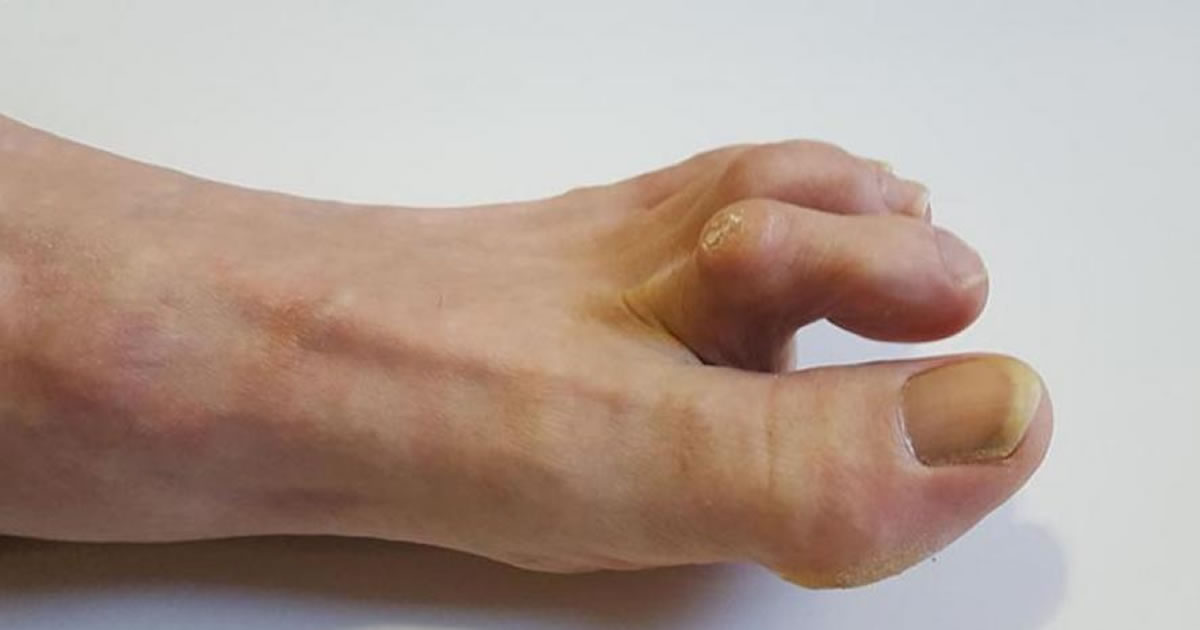
Claw, mallet, or hammer toes are malformations that occur in the toes (except in the hallux or big toe).
The remaining four fingers are made up of three bones (unlike the two bones that make up the big toe) and several joints (which are the union of two bones).
These deformities develop when the joints bend or flex more than normal due to continuous pressure on the fingers from wearing inappropriate shoes.
TYPES OF DEFORMITIES
FINGERS IN MALLET
The affected joint in the fingers in mallet is the closest to the tip of the finger.
HAMMER TOES
The affected joint in the hammertoes is that of the middle.
CLAW FINGERS
In this case, the two joints are involved, the joint closest to the tip of the finger and the joint of the middle of the finger. In this type there is a hyperextension of the metatarsophalangeal joint and a flexion of the proximal and distal interphalangeal joint.
These malformations can all occur in the same patient, so that a person can develop fingers in mallet, hammer, and claw at the same time.
SYMPTOMS
The main symptom of the fingers in mallet, hammer and claw are their deformation, but it is possible that the patient does not perceive the disease since the fingers deviate slowly and it is not observed aesthetically until after a while. There are other signs that can alert us that we suffer from them:
- Hardness and calluses on the back or at the base of the finger.
- Pulpejo of the affected fingers produced by excessive rubbing with footwear.
- Inflammation of the interphalangeal joints.
- Pain in the practice of deportation.
- Pain in the area of the tip of the foot, which bothers when performing activities of daily living such as walking uphill or downhill.
CAUSES OF THESE DEFORMITIES
- CONGENITAL ORIGIN. It is one of the causes of these deformities, although it is not as common. In this case it can be diagnosed in time. The podiatrist will advise the patient on the shoes to wear “THERAPEUTIC AND BIOMECHANICAL FOOTWEAR BOCCIO” and the most appropriate treatment to improve the problem.
- INADEQUATE FOOTWEAR. Most patients suffer from this deformation by using inappropriate footwear that compresses the toes, such as high-heeled shoes, very narrow or very tight toe, cause an imbalance in tendons and muscles of the foot favoring the formation of these pathologies.
- MUSCLE OR JOINT PROBLEMS. Another cause that can cause claw toes derives from muscle or joint problems caused by bunions, cavus foot, flat foot, valgus foot or injuries that have affected the shape of the bone. These types of feet are the most likely to have these pathologies
HOW IS IT DIAGNOSED?
- A professional, through a physical examination, can confirm this suspicion of fingers in claw, mallet or hammer by observing the bending of the finger. It is necessary to obtain x-rays of the foot to know precisely how compromised the joints of the toes are
It is recommended to make a complete biomechanical analysis of the gait and tread. In this way, in motion, the podiatrist will observe the deformity of the finger and more precisely determine the degree of the problem. The anatomy of the foot is designed to involuntarily seek the best way to adhere to the ground it treads.
TREATMENT:
FISIOTERAPIA
Stretching the extensor and flexor muscles is necessary to avoid stiffening of the joints and the help of a professional is recommended, following their instructions to prevent the situation from getting worse.
APPROPRIATE FOOTWEAR
Undoubtedly in the early stage of the disease the best recommendation is to change the habits in the style of footwear and use “THERAPEUTIC AND BIOMECHANICAL FOOTWEAR BOCCIO” shoes manufactured according to the individual and particular need of each patient, made with 100% natural materials, comfortable and designed especially for this type of situation.
SILICONE ORTHOSES
The use of custom silicone orthoses helps to correct, mitigate, or slow the advance of the deformity. This treatment is decisive in childhood and adolescence, when the deformity is flexible, and signs and symptoms are reduced.
SURGERY
The above treatments are conservative, they are used when the disease is of “flexible” grade. Surgical treatment is given in more severe situations, of “rigid” degree, when good results are not achieved conservatively. Surgery is the definitive solution to these problems, but it is the attending physician who determines its application as the case may be, however, it is necessary to change the habits in the style of footwear and use shoes manufactured according to the individual and particular need of each patient, “THERAPEUTIC AND BIOMECHANICAL FOOTWEAR BOCCIO”, made with 100% natural materials, comfortable and designed especially for this type of patients and thus avoid that the situation is repeated.
